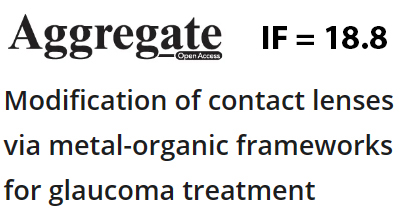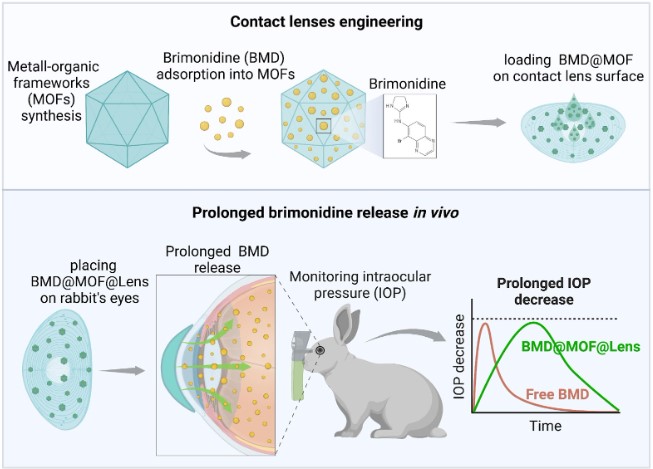Press-room / news / Science news /
Innovative Contact Lenses with Metal-Organic Frameworks for Glaucoma Treatment
Researchers from the Institute of Bioorganic Chemistry of the Russian Academy of Sciences, Harvard University, Sechenov University, the Pasteur Institute, and other scientific institutions in Russia and abroad have proposed a new method for controlling elevated intraocular pressure, which is a major damaging factor in glaucoma. They have developed a new type of contact lenses that incorporate metal-organic frameworks (MOFs) for the controlled and prolonged release of brimonidine, a medication used to reduce intraocular pressure. This innovation was presented in the high-ranking scientific journal Aggregate, highlighting its innovative nature and potential impact on ophthalmological practice.

Ringaci A, Yaremenko TV, Dolotova S, Plisko GA, Semivelichenko ED, Rogova AS, Muslimov AR, Ivkina AS, Ivkin DY, Erichev VP, Avetisov SE, Yongjiang L, Hai-Jun L,
Glaucoma is one of the main causes of irreversible blindness worldwide. Existing treatment methods, including eye drops, often come with drawbacks such as side effects and inconveniences, particularly challenging for elderly patients to adhere to the treatment regimen. The innovative contact lenses developed by the scientists offer significant improvements by minimizing these issues and potentially enhancing the quality of life for patients.
The process of developing the contact lenses involves the use of MOFs such as MIL-101(Cr), known for their ability to adsorb and retain drug molecules. These MOFs are highly porous structures capable of effectively capturing and slowly releasing brimonidine, ensuring its constant presence in the tear fluid and on the eye surface.
MOFs are applied to the lens surface in a process that includes drying and rehydration to ensure strong attachment of the nanoparticles to the lens matrix. This method allows the MOFs to remain on the lenses throughout their wear time, even during prolonged contact with tear fluid. Moreover, the MOFs used in the lenses are not only stable but also do not affect the transparency and optical properties of the lenses, which is critically important for their functionality and patient comfort.
The lead author of the study, Dr. Alexey Yaremenko, comments: "We aimed to create a solution that would make life easier for patients by reducing the need for frequent application of drops, which is especially important for the elderly. Our lenses demonstrate improved reduction of intraocular pressure and require less frequent application compared to traditional methods, making them a promising tool in the fight against glaucoma."
The study showed that the new lenses are safe for long-term wear and do not cause irritation or other eye damage, which is an important aspect for clinical use. In addition, the metal-organic frameworks in the lenses not only provide prolonged, but also controlled release of brimonidine, which helps maintain optimal intraocular pressure throughout the wearing time of the lenses. This is a significant improvement compared to current treatment methods, where the effect of the medication quickly diminishes between doses.
Dr. Yaremenko adds: "Our approach to using metal-organic frameworks to stabilize and prolong the action of medicinal substances in contact lenses represents a promising strategy in ophthalmological therapy. This study could lay the foundation for the development of new treatment methods not only for glaucoma but also for other diseases requiring local drug delivery."

Figure 1. The process of modifying contact lenses using metal-organic frameworks for prolonged brimonidine release and monitoring the effectiveness of intraocular pressure reduction on a rabbit model.
The work was supported by the Ministry of Science and Higher Education of the Russian Federation, agreement № 075-15-2024-536.
may 13, 2024

